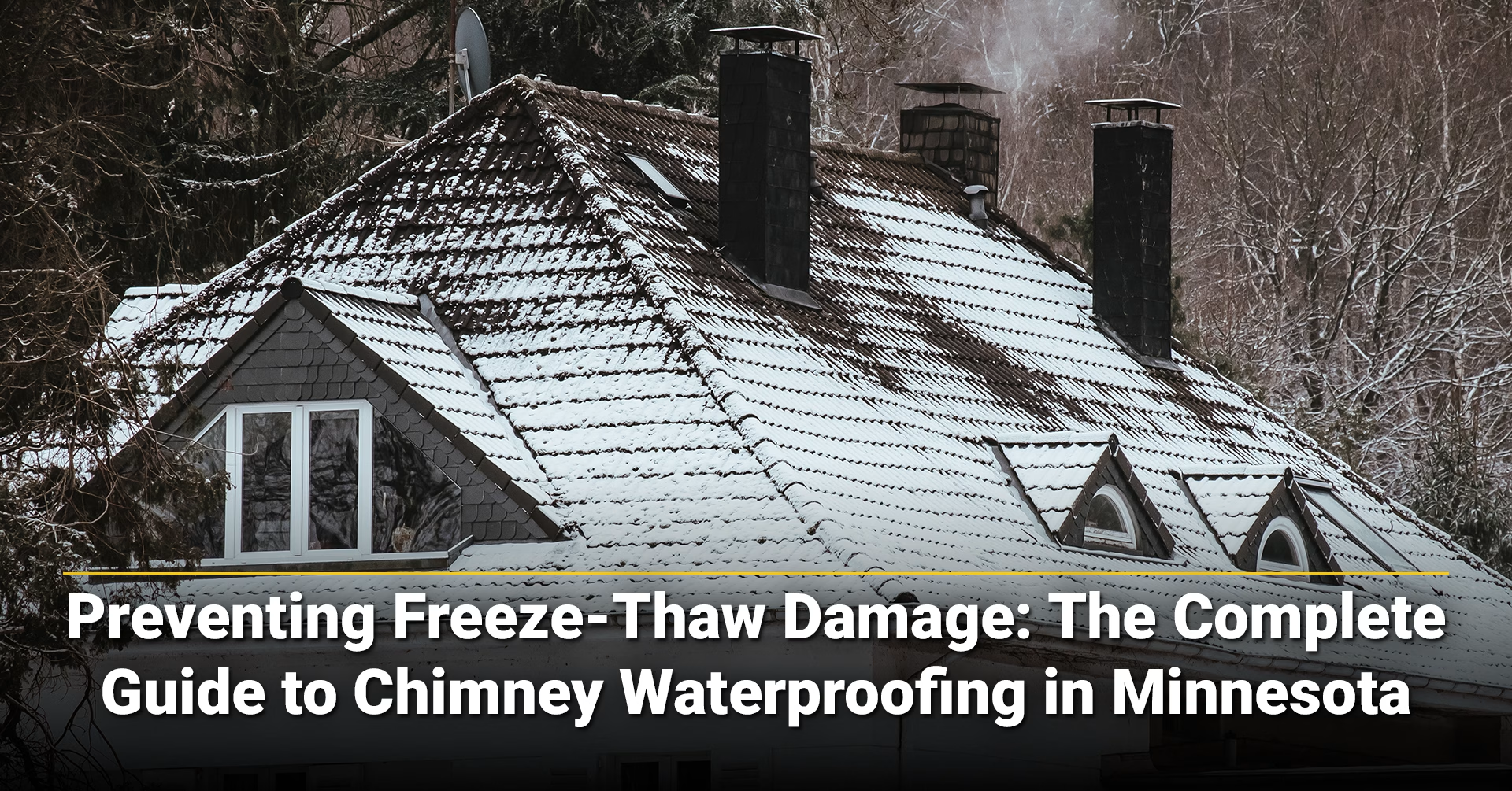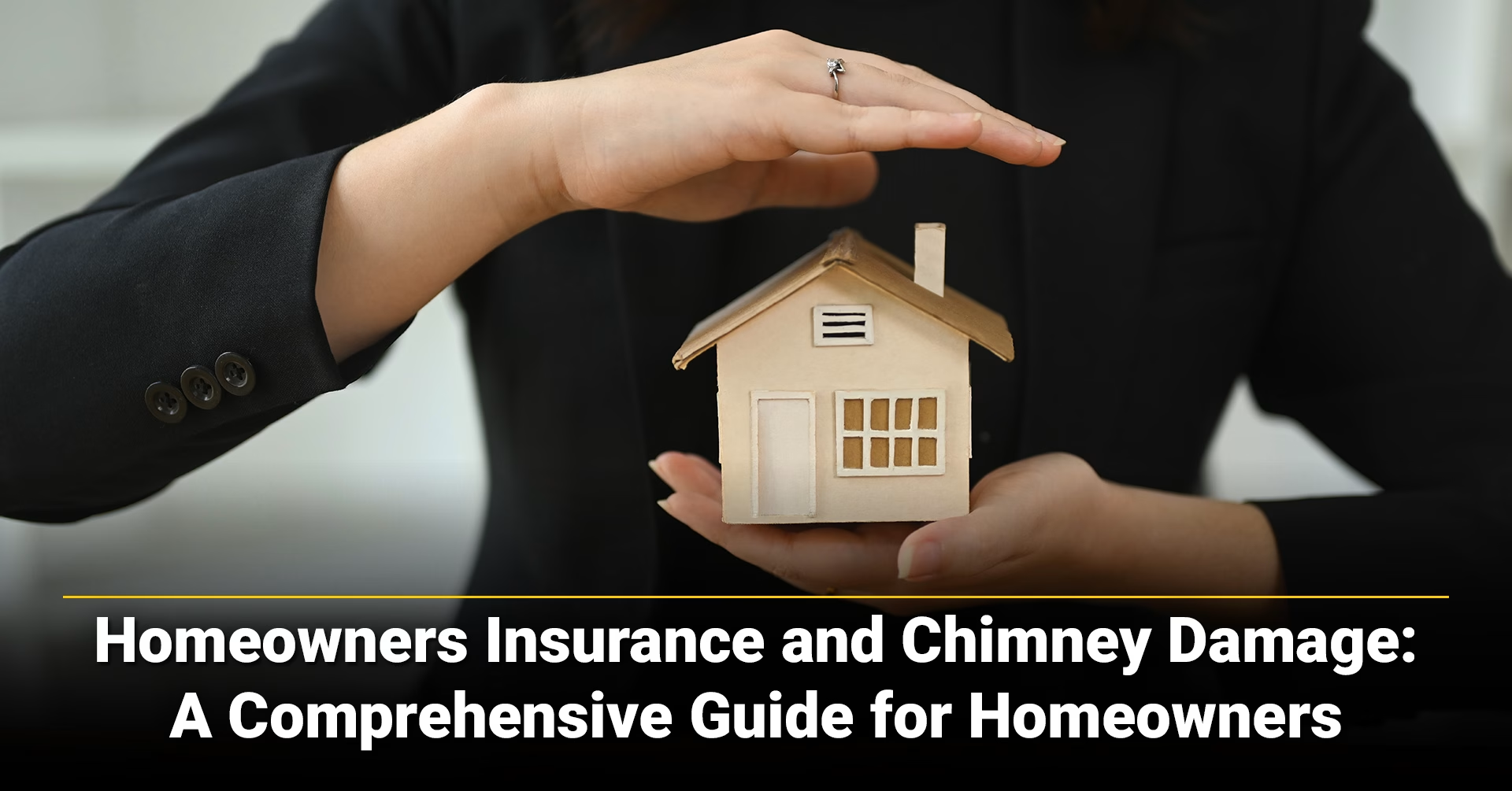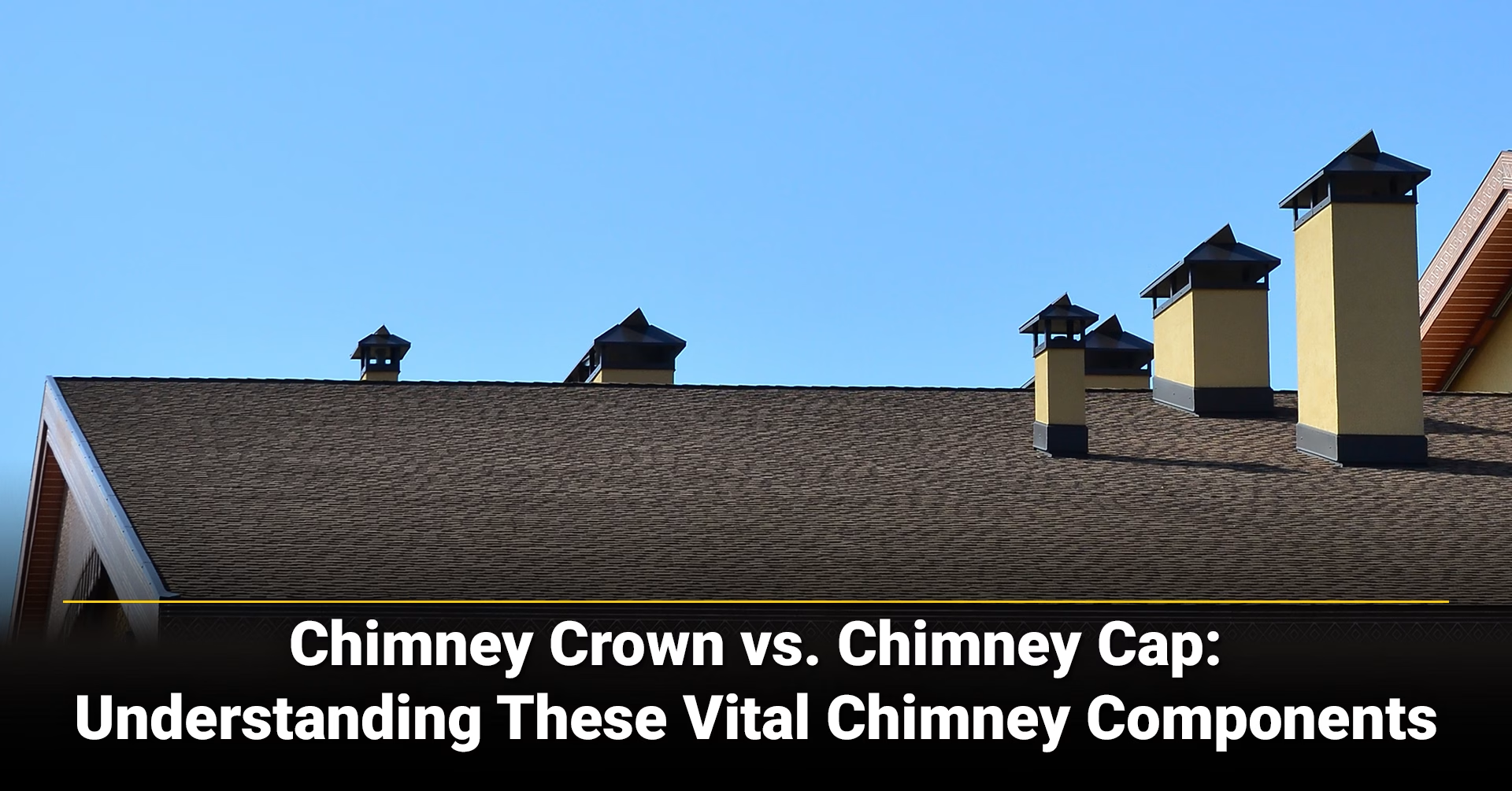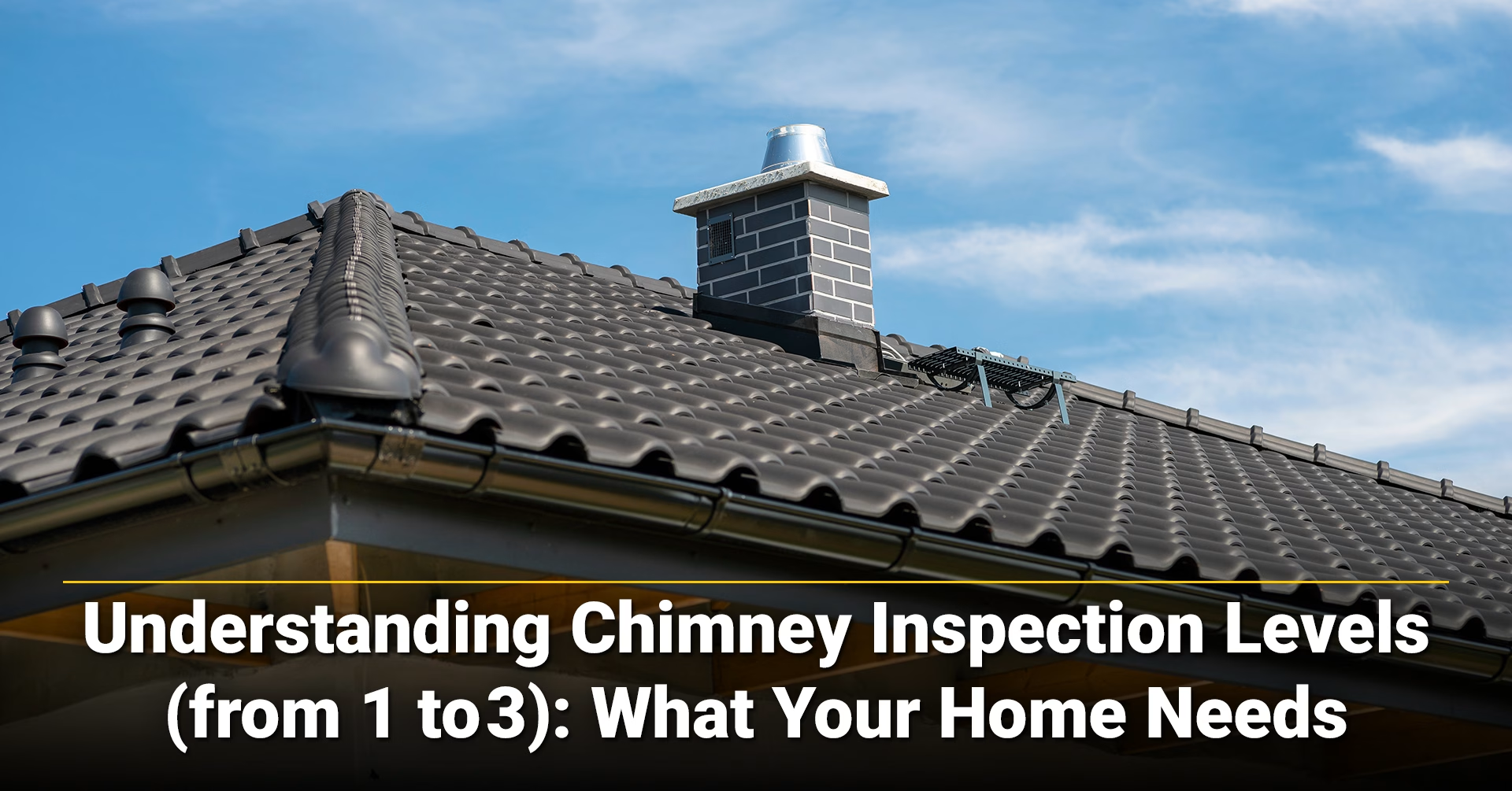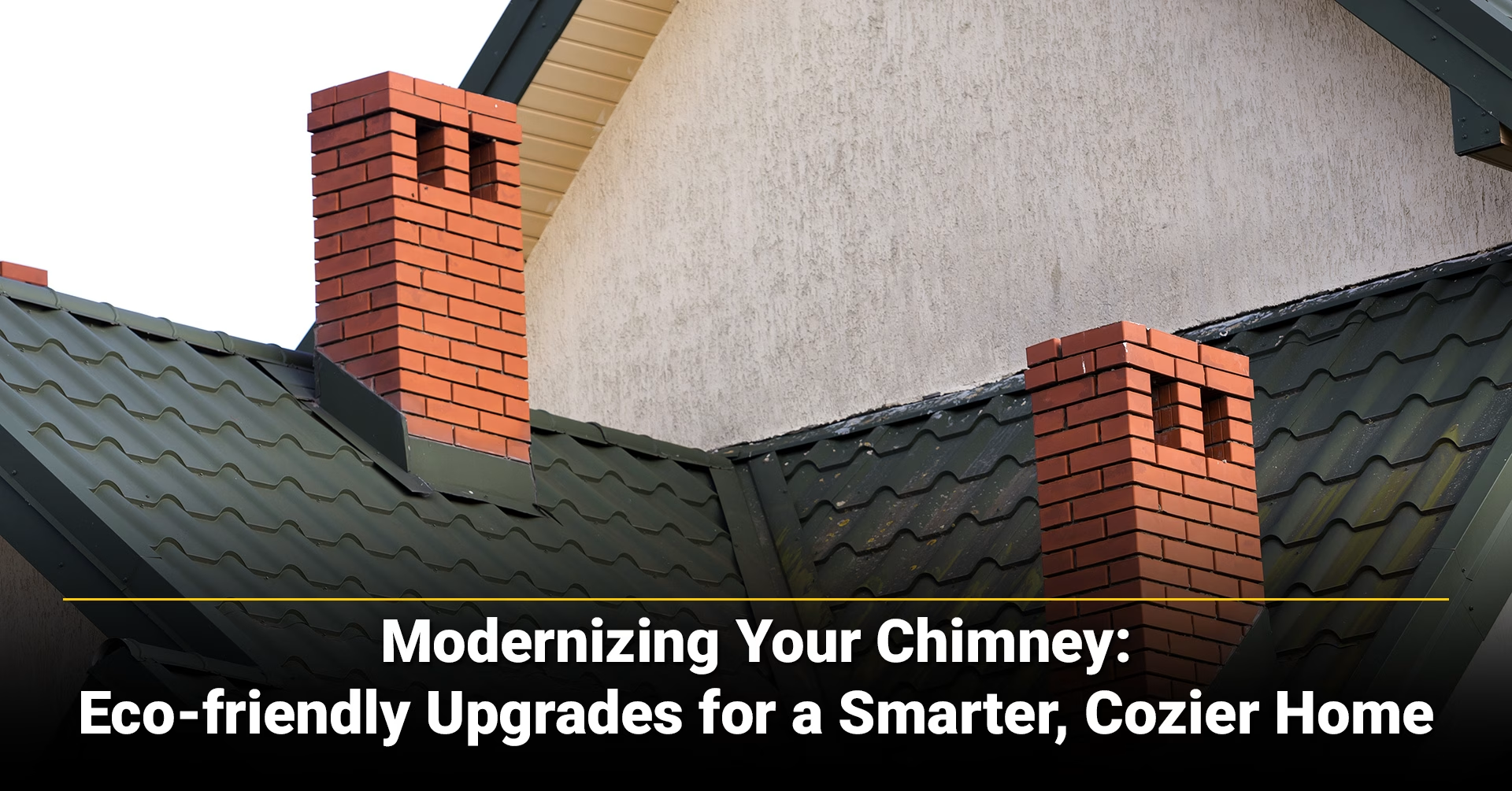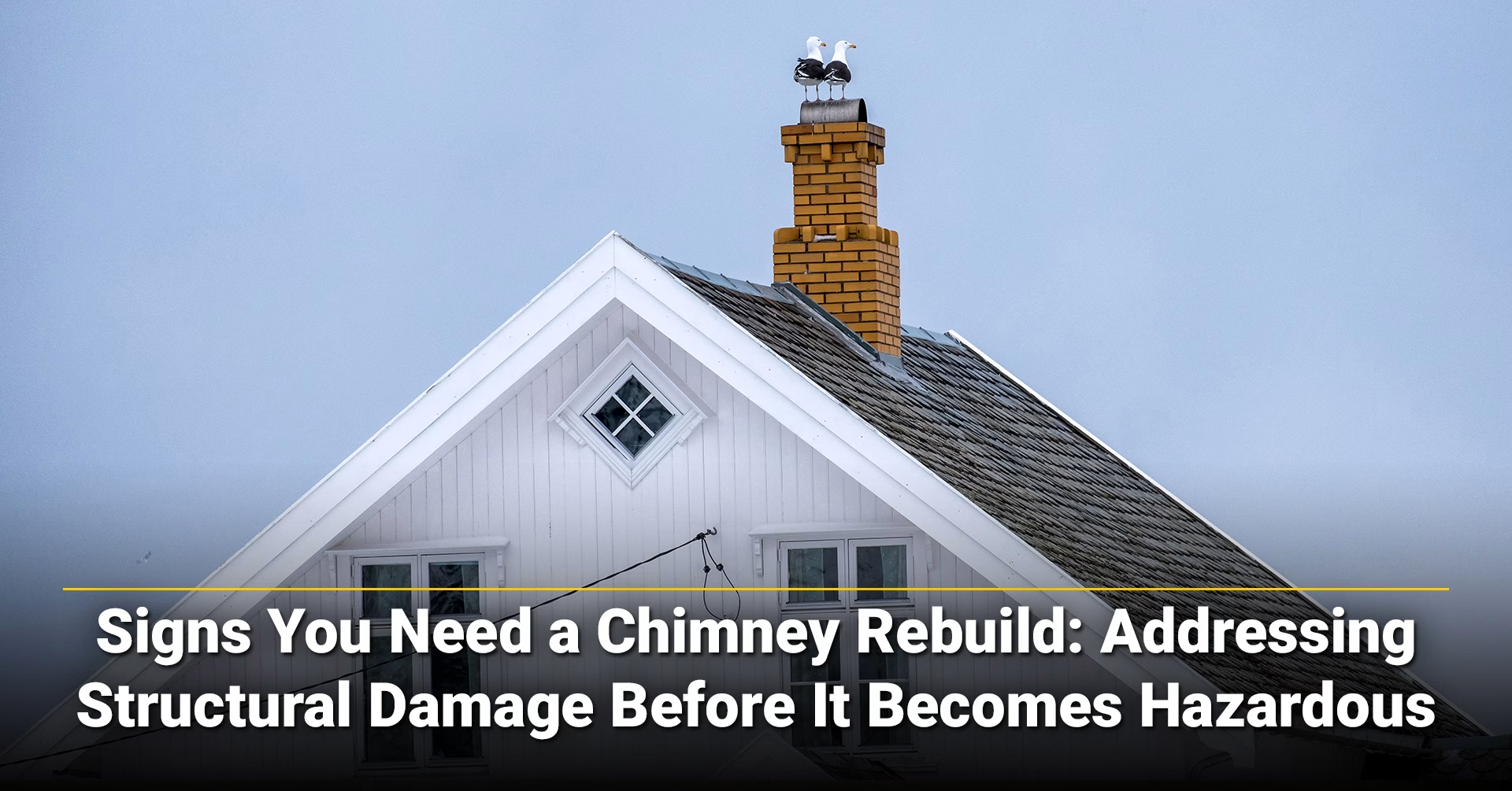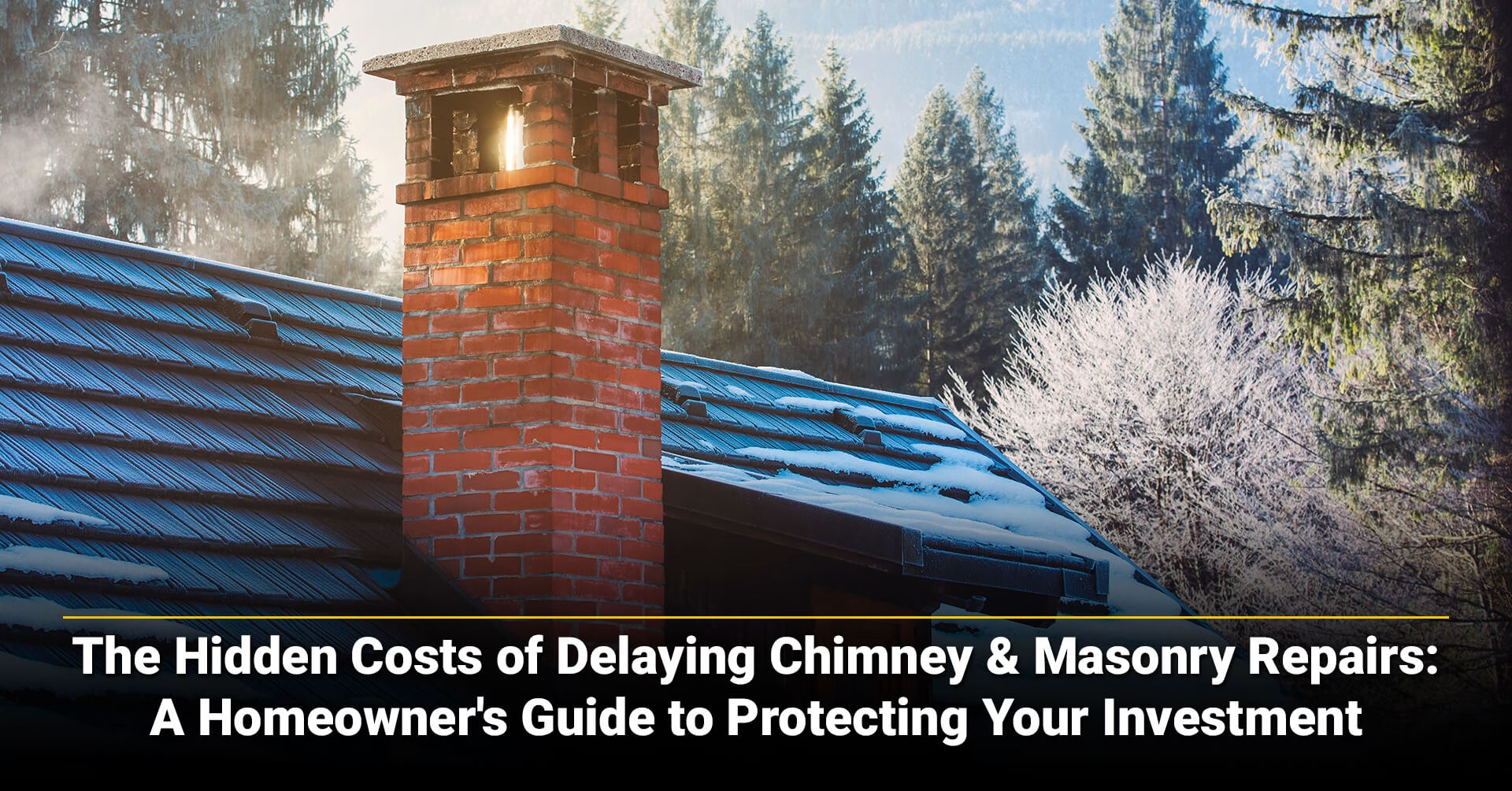Introduction: The Unseen Price Tag of Procrastination
Homeowners often delay chimney and masonry repairs since these are not parts of the home others will notice or comment on. This overlooks a crucial truth: delaying repairs can be a costly gamble where the house always loses (and not in a good way). Minor issues rapidly escalate, leading to significantly higher expenses, compromised home safety, diminished property value, and even denied insurance claims.
This article details how small problems can gradually expand into major financial burdens if left untreated, homeowners’ insurance coverage, and provides actionable advice on identifying early warning signs. Understanding these consequences are essential for homeowners to protect their investment and ensure long-term financial prudence.
The mindset to save money now directly contributes to future cost escalation. The true cost of delay extends beyond monetary figures; it includes the stress of avoidable crises and threats to home safety. This analysis aims to reframe early action as a strategic investment in property longevity and financial security.
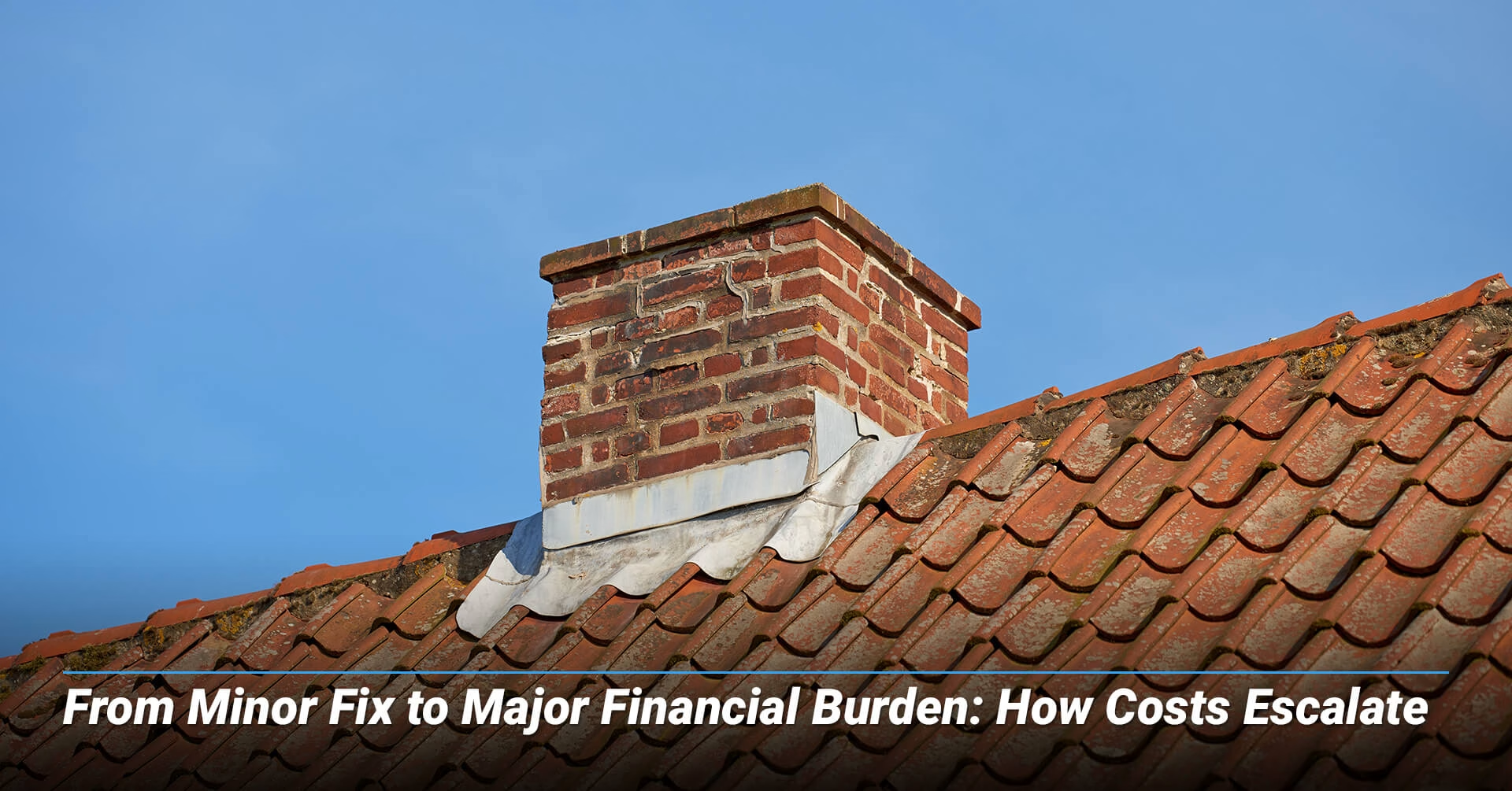
1. From Minor Fix to Major Financial Burden: How Costs Escalate
Chimney and masonry systems face harsh environmental elements and internal stressors year round. Unaddressed, minor issues quickly turn into major problems.
Deterioration often begins with hairline cracks in the chimney crown or small fissures in mortar joints. Having this be the gateway to water entering, it then freezes and expands, causing immense pressure. A repeated freeze-thaw cycle accelerates damage, widening cracks and creating new ones.
Continued water exposure degrades masonry materials. Bricks can spall (flake or crumble), and mortar joints can crumble. As this occurs, the chimney’s structural integrity is severely compromised. This can result in a leaning chimney, instability, or worse, collapsing. Inside, water can damage the chimney liner, which leads to reduced efficiency and safety hazards like carbon monoxide leaks and spread to other parts of the home causing mold and rotting. The snowball effect here is that a minor chimney crown repair can be easily fixed, but if left untreated, will likely escalate to a full replacement that costs thousands of dollars more. Cost escalation is often exponential. A small initial problem can multiply if unaddressed, leading to encompassing collateral damage. This compounding effect transforms a manageable maintenance task into a complex, financially burdensome project.
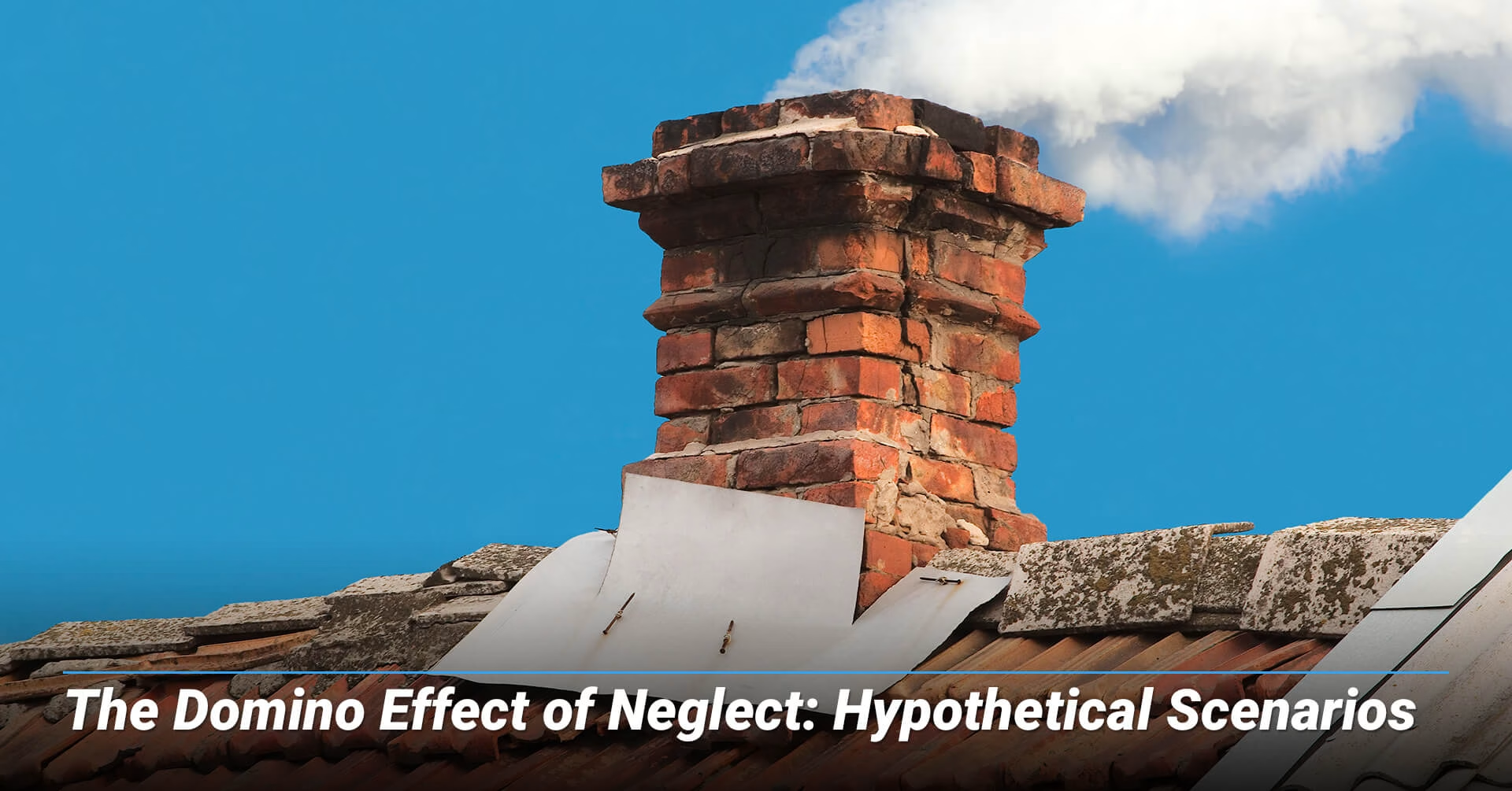
2. The Domino Effect of Neglect: Hypothetical Scenarios To illustrate the financial implications of delayed repairs, consider these scenarios:
Scenario 1: The “Small Crack” Catastrophe
A homeowner notices a hairline crack in their chimney crown. They ignore the issue and focus on other repairs that need to be made. While they may have forgotten, their chimney has not as each season, rainwater seeps in, freezing and expanding, damaging masonry. This leads to brick spalling and mortar deterioration. What began as a hairline crack now requires extensive brick replacement and a partial chimney rebuild, costing a few thousand dollars now. If left longer, a full chimney rebuild could soar to approximately $3,100-$20,000 or even more depending on the situation at hand. The initial repair costs have now multiplied 10 to 100 times more.
Scenario 2: The “Minor Leak” Nightmare
Those living in a home notice a small water stain on their attic ceiling near the chimney. Rather than investigating, they dismiss the sign. Over time, it continues, with the constant moisture leading to mold and mildew growth on roof decking and rafters. Wood begins to rot, compromising roof structural integrity and potentially spreading to interior ceilings and walls. What started as a minor leak now requires the original chimney repair plus extensive mold remediation, structural roof repairs, and significant interior drywall and paint work. These additional costs can cost upwards of thousands of dollars, far exceeding the initial flashing repair.
Both scenarios highlight how not acting can lead to manageable fixes to major structural and functional repairs throughout the home. It makes the repairs a greater financial burden while putting everyone in danger regarding their safety and the home’s property value.
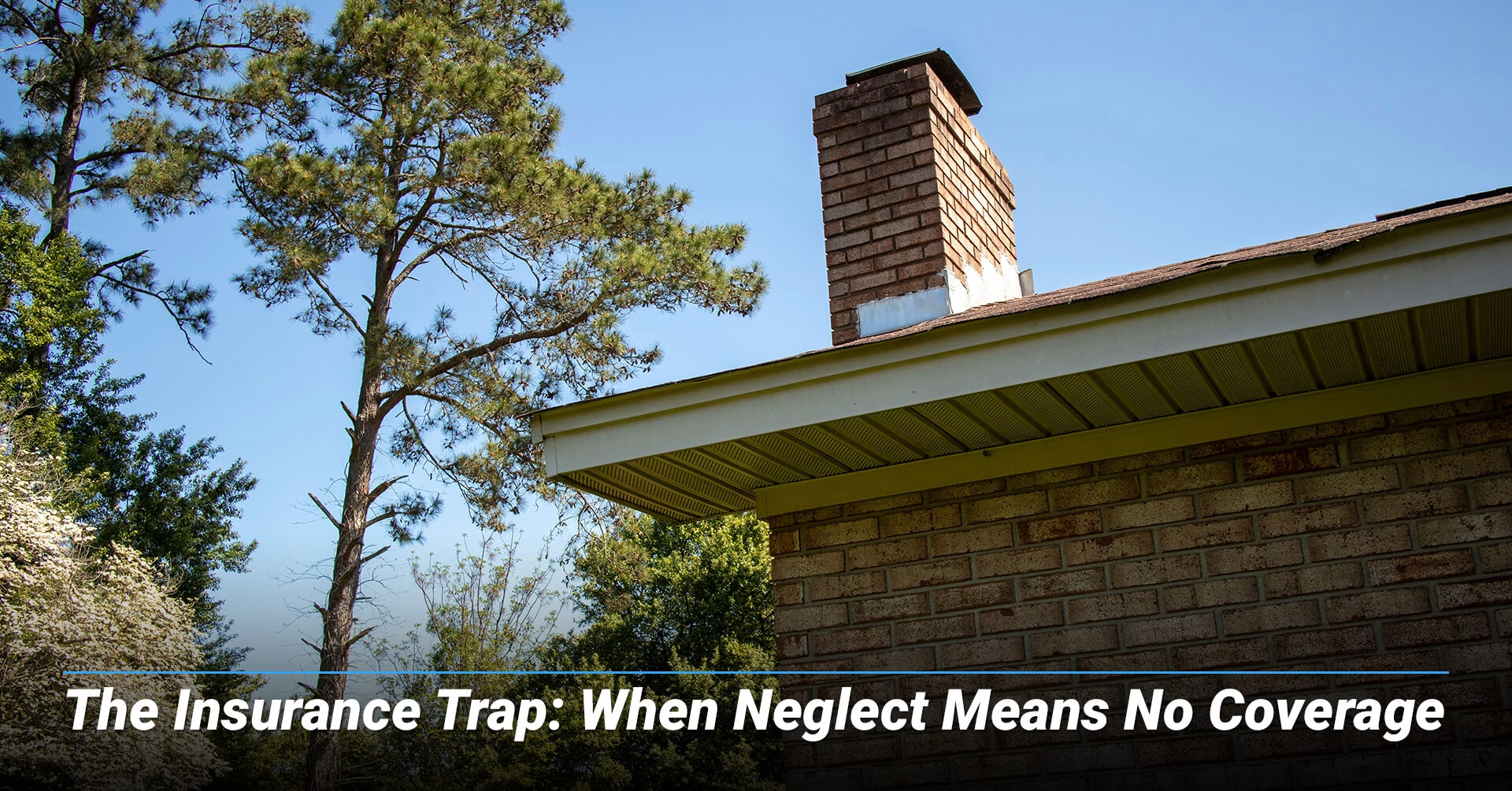
3. The Insurance Trap: When Neglect Means No Coverage
Homeowners’ insurance protects against sudden, accidental perils (lightning strikes, heavy rain/hailstorms, fallen trees, chimney fires), not deferred maintenance or gradual deterioration. This key difference in words here often leads to devastating out-of-pocket expenses for homeowners who usually think they are covered.
However, a significant exclusion in most policies pertains to damage from neglect, aging, or normal wear and tear. This “neglect clause” is a powerful financial incentive for proactive maintenance. For instance, if a chimney fire occurs due to excessive creosote buildup, the insurer may deny the claim. Similarly, damage from crumbling bricks, a leaning chimney, or collapse due to pre-existing structural issues will likely not be covered. Even extensive water damage, if after an inspection is found to be from neglected faulty masonry, a deteriorated crown, or compromised flashing, can lead to a denied claim.
A denied claim means the homeowner is responsible for all of the repair costs, creating an unexpectedly massive personal financial burden. This highlights the link between proactive maintenance and financial security. Homeowners must consult their specific policy details to understand these exclusions, as guidelines vary.
The exclusion of neglect-related damage in insurance policies showcases a fundamental principle of risk management. Preventable damage is a predictable risk as responsibility shifts from insurer to homeowner. Proactive maintenance is not solely about avoiding physical damage; it’s about maintaining eligibility for insurance coverage when an unforeseen event occurs. This reframes chimney maintenance as a critical component of a homeowner’s financial risk management strategy.
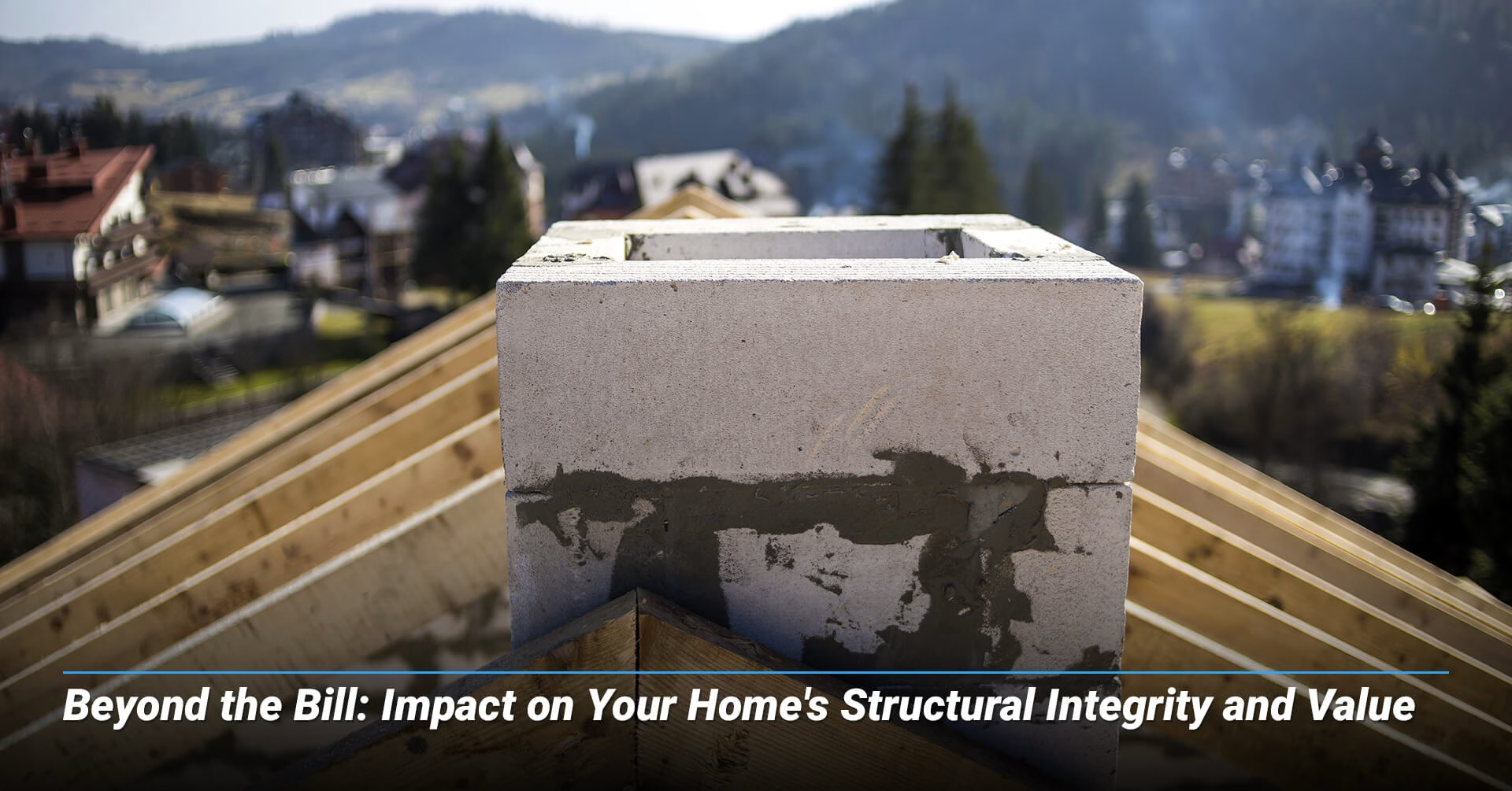
4. Beyond the Bill: Impact on Your Home's Structural Integrity and Value
Delayed chimney and masonry repairs extend beyond direct costs and insurance denials, profoundly compromising a home’s structural integrity and diminishing its market value.
A. Compromised Structural Integrity
Water infiltration from neglected chimney issues can cause widespread structural damage. These leaks can spread to the roof, affecting shingles, underlayment, and decking. Persistent moisture leads to mold, mildew, and critically, rot and deterioration of wooden components like roof rafters, ceiling joists, and even the foundation.
Neglected chimneys also pose severe safety hazards. A chimney weakened by deterioration can lean or separate from the house, risking partial or complete collapse. Flammable creosote buildup in an uncleaned chimney drastically increases chimney fire risk, causing extensive property damage and endangering occupants. Additionally, blockages or damaged flue liners can prevent proper ventilation of combustion gases, leading to silent, deadly carbon monoxide accumulation.
B. Protecting Your Investment: Curb Appeal and Resale Value
A damaged chimney makes a home stand out, and not in a good way. Cracks, missing bricks, efflorescence, or a noticeable lean signal neglect, raising red flags for potential buyers. Even a well-maintained house can appear poorly kept if its chimney is in disrepair.
Beyond aesthetics, this flaw negatively impacts market value and appraisal. Buyers encountering obvious structural or maintenance issues become wary, fearing hidden problems and substantial future expenses. This apprehension often translates into lower offers or reluctance to purchase. Clients are often willing to pay more for a home in excellent condition, reducing their perceived risk. A new or rebuilt chimney can significantly increase home value, sometimes adding more value than the rebuild cost.
Condition indicates the home’s overall health. A neglected chimney represents silent depreciation, acting as a tangible proxy for the property’s care level. This erosion of trust and perceived value creates a negative feedback loop: neglect leads to visible damage, perceived lower value, and ultimately, lower offers or a prolonged sale. This understanding appeals to a homeowner’s long-term financial planning, positioning proactive repair as a critical strategy for asset protection and value appreciation.
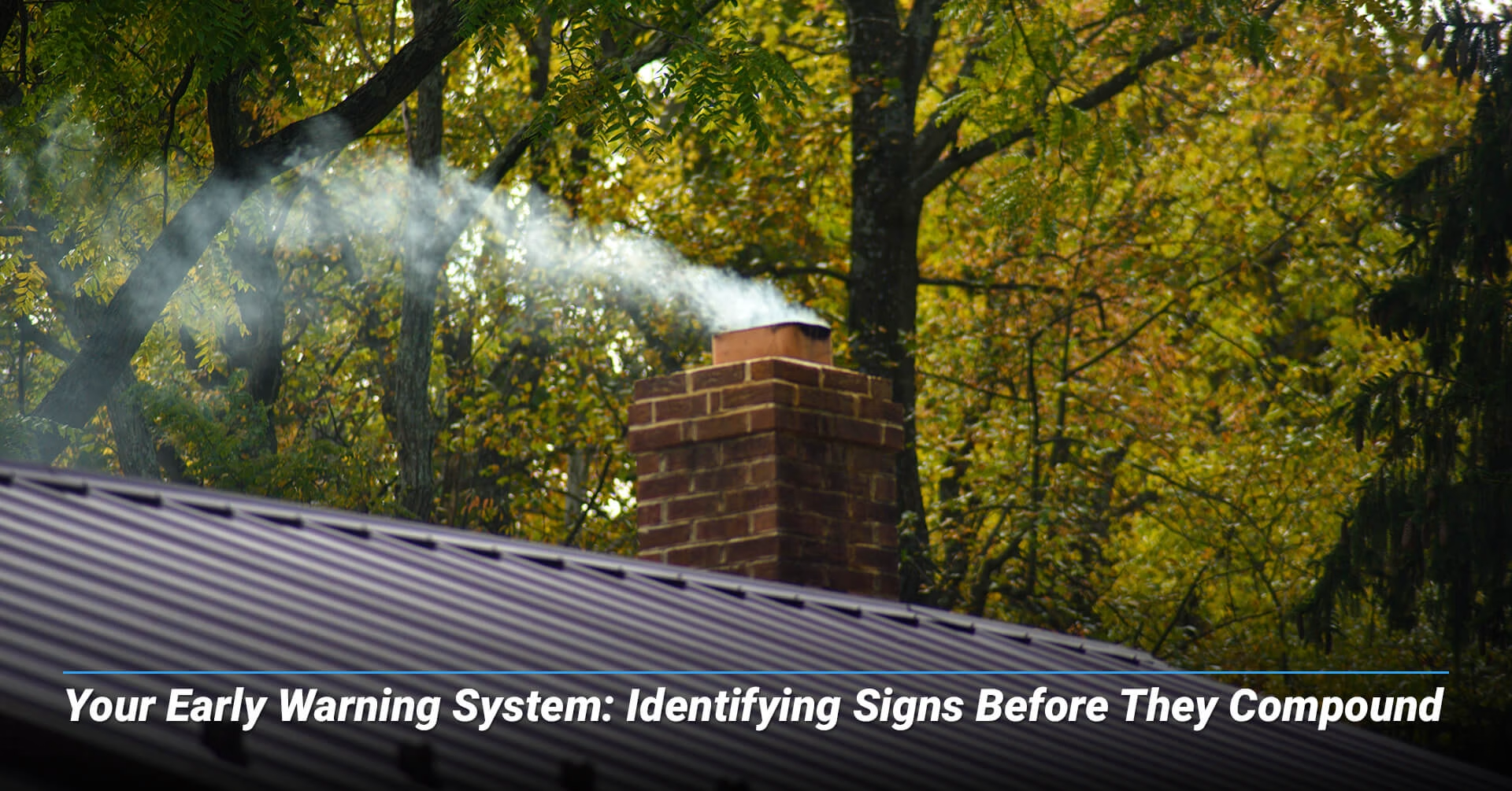
5. Your Early Warning System: Identifying Signs Before They Compound
Empowering homeowners to recognize early warning signs is crucial for keeping minor issues as minor issues. While some problems require professional assessment, many initial indicators are visible.
A. Visible Exterior Signs
● Water Stains or Discoloration: Yellowish-brown patches on the chimney exterior, or on interior walls/ceilings near the chimney, indicate water infiltration.
● Efflorescence: White, powdery staining on chimney bricks, caused by water dissolving salts, is a telltale sign of moisture infiltration.
● Crumbling Mortar or Missing Bricks: Gaps, loose mortar joints, or visibly missing bricks indicate deterioration, often from water damage and freeze-thaw cycles.
● Cracks: Hairline cracks in the chimney crown, bricks, or mortar joints are water entry points that can rapidly expand.
● Leaning Chimney: A noticeable tilt or separation from the home is a severe
structural red flag requiring immediate professional attention.
B. Interior & Functional Signs
● Damp or Musty Odor: A persistent damp or musty smell from the fireplace area or surrounding walls often signals water infiltration and potential mold growth.
● Rust: Rust or corrosion on the firebox, damper, or other metal components suggests ongoing moisture problems.
● Damaged Interior Finishes: Peeling/bubbling paint or discolored wallpaper near
the chimney can indicate water intrusion.
● Persistent Smoke Problems: Smoke entering the home instead of exiting through the flue signals a draft issue, often from blockages or a damaged liner.
● Unusual Odors: Beyond musty smells, strange odors from the chimney could indicate creosote buildup, animal nests, or other issues.
While homeowners can spot these signs, the first thing to do is contact a certified professional. They can conduct a thorough inspection to identify hidden issues, assess damage, and determine the cause.
Providing homeowners with warning signs empowers them to monitor their property proactively. Understanding these indicators and potential cost escalation makes them more likely to take early action. Doing so creates a positive cycle: increased awareness leads to earlier detection, timely repairs, significant cost savings, and peace of mind. This approach instills a “proactive homeowner mindset.”
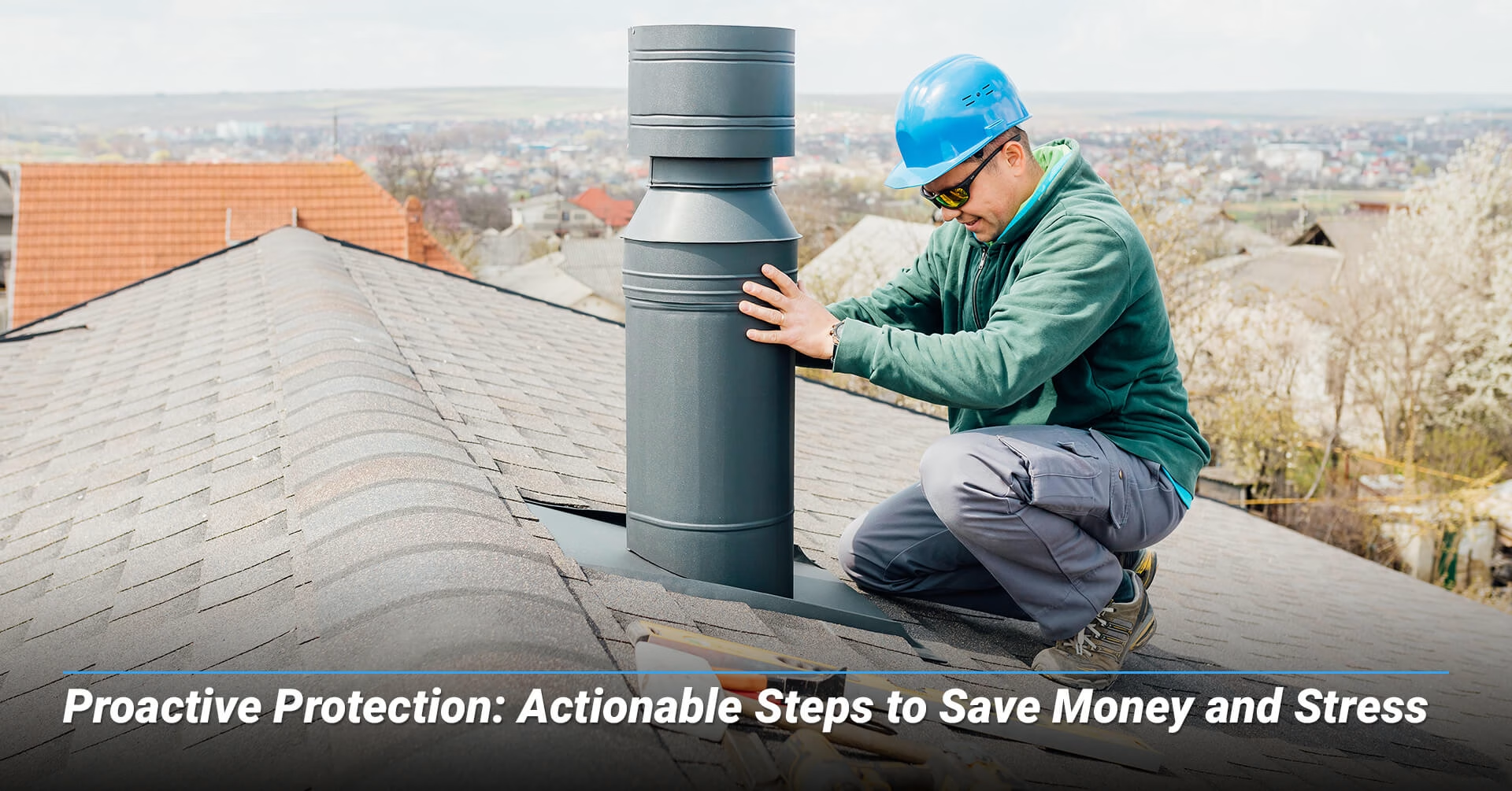
6. Proactive Protection: Actionable Steps to Save Money and Stress
Protecting a home from the hidden costs of delayed chimney and masonry repairs requires a proactive approach, saving money, enhancing safety, and preserving long-term property value.
A. Annual Professional Inspections
The most important preventative measure is scheduling annual professional chimney inspections. Certified technicians identify issues in nascent stages, often before they are visible or become costly problems. Early detection of minor cracks, creosote buildup, or mortar deterioration enables timely, inexpensive repairs. The modest cost of regular inspection and cleaning pales in comparison to potential expenses from fire damage, emergency repairs, or energy inefficiency due to neglect.
B. Prompt Repair of Minor Issues
Once minor issues are identified, address them immediately. Small cracks in the chimney crown or mortar joints are not merely cosmetic; they serve as gateways for water infiltration that can rapidly lead to widespread, expensive damage. Acting swiftly prevents expansion and a domino effect of deterioration throughout the chimney and home structure.
C. Invest in Protective Measures
Beyond routine cleaning and minor repairs, protective measures offer significant long-term benefits:
● Chimney Caps: An investment that prevents water, debris, and animals from
entering the flue. This prevents costly issues like blockages, damaged liners, and interior water damage.
● Chimney Waterproofing: Applying a professional-grade sealant to exterior
masonry protects the chimney from water penetration. Doing so preserves brick and mortar integrity, extending lifespan and preventing spalling.
The benefits of proactive maintenance—long-term savings, improved energy efficiency, enhanced safety—are well-documented. This approach frames chimney and masonry care as a smart, long-term investment strategy. Regular, smaller investments in inspections and minor repairs yield significant returns by avoiding major expenses, preserving home value, and sustaining safety.
Conclusion: Invest in Prevention, Preserve Your Home and Wallet
Delaying chimney and masonry repairs is a false economy, leading to exponentially higher costs, significant safety risks, and diminished home value. Minor issues rapidly escalate into widespread structural damage, often requiring expensive rebuilds.
Homeowners’ insurance typically excludes neglect-related damage, forcing substantial out-of-pocket expenses. Beyond direct financial impact, neglect compromises structural integrity, invites water damage, and reduces curb appeal and market value. The advantages of early intervention are clear: substantial financial savings, enhanced safety, preserved home value, and invaluable peace of mind.
Invest in prevention. Proactive chimney and masonry care preserves your home’s comfort, safety, and long-term value. Schedule a professional chimney inspection today to prevent future financial distress and ensure your home’s longevity.
Frequently Asked Questions
Here are some frequently asked questions that complement information found in this article:
1. Does homeowners insurance cover chimney damage?
Generally, insurance covers chimney damage from sudden, accidental perils (storms, lightning, fallen trees). However, damage from neglect, aging, or wear and tear is typically not covered. Claims may be denied if damage is due to excessive creosote buildup or pre-existing structural issues from lack of maintenance.
2. How can I choose a reputable chimney and masonry professional?
Look for companies with business longevity, positive customer feedback, and valid liability and workers’ compensation insurance. Always get detailed written estimates and contracts.
3. What are the benefits of year-round chimney and masonry maintenance?
Year-round maintenance, including annual inspections, prevents costly issues like chimney fires, carbon monoxide poisoning, and structural damage. It ensures efficient fireplace operation, potentially lowering energy costs, and extends the chimney system’s lifespan, saving money on major repairs.
4. Why does my fireplace smoke, and what should I do?
A smoky fireplace indicates a draft problem, often from creosote buildup, blockages (debris, animal nests), improper flue sizing, or a cold flue. Persistent smoke requires professional diagnosis, cleaning, or repair for safe operation.
5. What are the different levels of chimney inspection?
Chimney inspections follow NFPA 211 standards:
- Level 1: Basic visual inspection for readily accessible portions (annual checks).
- Level 2: Visual inspection plus camera scan of flue interior (property sales, malfunction, fire).
- Level 3: Invasive inspection with partial disassembly (only for hidden hazards requiring further investigation).

